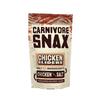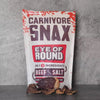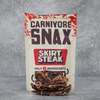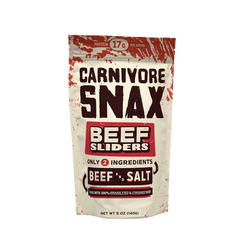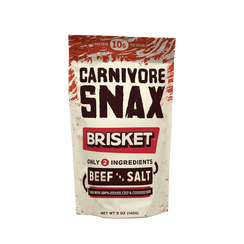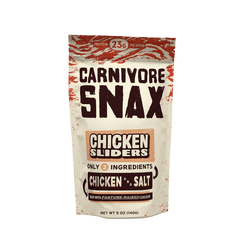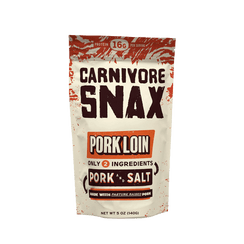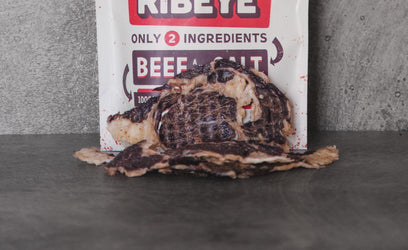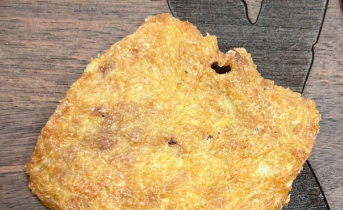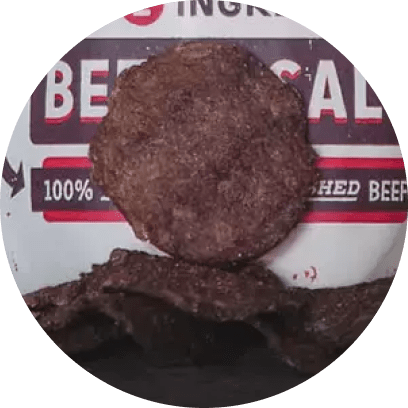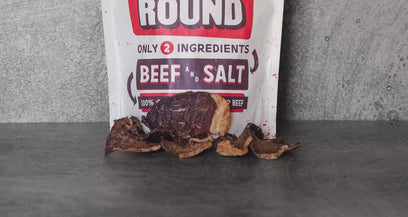THE CARNIVORE DIET BENEFITS




Are you looking for information on what is allowed on the carnivore diet? If you know the potential benefits of switching to the carnivore diet, the obvious next step is learning what you can and cannot eat on this diet. This can seem overwhelming, as it seems that everything you're used to eating is off-limits now.
Don't sweat it - this short guide will direct you to the types of food you can start enjoying every day while explaining which foods and drinks to avoid. We will also touch on all the benefits you can expect by switching your diet to this ancestral diet. Keep reading to discover what foods are allowed on the carnivore diet.
First, here is a brief overview of the carnivore diet for those new here.
A Brief Introduction to the Carnivore Diet
Before figuring out what is allowed on the carnivore diet, you might be interested in the health benefits. There are many benefits to the carnivore diet. Three primary benefits are a healthier body, a sharper mind, and weight loss. A big reason for these benefits is that this diet eliminates many harmful foods that have become staples in the American diet.
Healthier Body
The health benefits include a healthier gut, lower blood sugar, a healthier heart, and less inflammation. By eliminating food high in sugar, fat, lactose, and carbs, many people with chronic illnesses also experience less pain and related symptoms.
Sharper Mind
One surprising benefit for many people is having a sharper mind throughout the day. People who switch to a meat-centric diet will get additional vitamins and minerals such as Vitamin B12, zinc, and iron. These nutrients are known to improve brain function.
And when they're combined with lower sugar intake, you won't experience afternoon slumps from blood sugar crashing. The result is a clearer and sharper mind for a more productive you.
Weight Loss
Finally, many people who switch to this diet experience weight loss. This is especially true in the beginning. If your current diet is comparable to other Americans, you likely eat a lot of empty calories and sugar.
These calories are not providing substance or nutrients and, more often than not, contribute to fat buildup and, thus, weight gain. This is a big reason why many Americans lose weight after this dietary shift. By eliminating these sources, your body starts to burn fat as fuel.
What is Allowed on the Carnivore Diet? Our Recommendations for Building Your Meal Plans
Now that you know the benefits, what will you be eating? As you may know, the carnivore diet consists primarily of meat and meat products. HEre is a comprehensive list of everything you can (and cannot) have on the carnivore diet.
Beef
Beef is high in protein, vitamins, and minerals. It can aid with muscle growth and maintenance. In a 4-ounce serving, you will get 19 grams of fat, 265 calories, and 21 grams of protein. Meat does not have sugar or carbs - making it a perfect choice for this diet.
Beef can be prepared in many ways, including cooking with a slow cooker, pressure cooker, or air fryer. You can also grill, roast, bake or fry it. This means you'll never get bored with beef!
Chicken
Chicken is usually a popular meat because it is lower in fat, high in protein, and can be prepared in many ways. A 4-ounce serving of chicken has 187 calories, 4 grams of fat, and 35 grams of protein.
Cooking chicken is like starting with a clean palette as it can taste different depending on how you cook it. Whatever flavoring you add, the taste can be completely different.
Pork
Pork does have a lot more fat than chicken, but it is still high in protein. It has 270 calories, 16 grams of fat, and 30 grams of protein in a 4-ounce serving. It also is an excellent source of iron, zinc, niacin, and vitamins B6 and B12. These B vitamins are needed for brain function and blood cell formation.
Fish
Fish is another popular choice in this diet. Different types of fish can have different macronutrients, just as different preparation can change the fat content. If you grill a 4-ounce piece of fish, you will have 25.6 grams of protein but only 124 calories and 1.5 grams of fat. This makes fish a great choice if you are trying to lose weight. Fish also contains omega-3 fatty acids, vitamins, and minerals.
Let's discuss different fish choices, so you can incorporate each of the ones you love into your meal plan!
- Canned Tuna: This one is popular as it can be used as a snack throughout the day! A 4-ounce serving will give you 26.77 grams of protein but only 145 calories and 3.3 grams of fat. Those are way better numbers than the snacks that most people eat!
- Tuna Filet: If you prefer eating a filet, you can do this too. The macros are very similar at 27 grams of protein, 120 calories, and 1 gram of fat.
- Salmon: This is another popular type of fish. It is often served fried, grilled, roasted, or baked. 3 ounces of salmon has 20 grams of protein, 3.6 grams of fat, and 118 calories.
- Tilapia: This is another popular white fish. It has 22.2 grams of protein, 109 calories, and 2.3 grams of fat per 3-ounce serving.
- Haddock: Haddock is one of the most popular types of fish. It has 143 calories, 1 gram of fat, and 31 grams of protein.
- Cod: Cod is one of the most affordable types of fish you can buy, so it is a good choice if you are watching your budget. A 3-ounce serving of cod has 19 grams of protein, 0.7 grams of fat, and 89 calories.
- Other Seafood to consider: Of course, you can add in other seafood. These choices include catfish, pollock, trout, bass, and all types of shellfish.
Shopping and Preparation Note: If you are not buying fresh fish (or catching it yourself), prepare it according to the carnivore diet. For instance, pan-frying, baking, roasting, or grilling are fine. Air-frying is also acceptable, but deep-frying would involve coating the fish in things like flour or breadcrumbs, which is not part of the diet.
Eggs
When looking into what is allowed on the carnivore diet, you will be happy to know that eggs are on the list as an animal product!
One egg has 75 calories, 7 grams of protein, and 5 grams of fat. One of the benefits of eggs is that they are quick and easy. They can be enjoyed in numerous ways, including hard or soft-boiled, scrambled, or fried. Eggs are heart-healthy, affordable, and high in protein.
Bone Marrow
Bone marrow has 110 calories, 12 grams of fat, and 1 gram of protein per serving. This food helps defend against inflammation of joints and osteoarthritis and relieves joint pain.
Most people who have not been on specialized diets like the carnivore diet have never had bone marrow. This means you do not know how to eat it, prepare it, and, most importantly, what bone marrow tastes like.
Bone marrow has a high-fat content, which contributes to its creamy, buttery flavor. When cooked, it has a sweet and savory flavor. Because of the taste and consistency, many people use it as a butter alternative.
Here is a common way to prepare and cook bone marrow.
- First, you must soak the bone marrow in salted water for at least 24 hours. Place the bone marrow in a bowl of salted water and store it in the refrigerator for one day before preparing it. This will remove blood spots, and it will firm up the marrow.
- You can clean any excess meat off the bones for presentation purposes before cooking. You will need to scrap this uncooked meat off the bones with a knife.
- Add some extra flavor to the bone marrow by sprinkling salt, pepper, garlic, or parsley. Make it a 350 degrees F preheated oven on a baking tray for 15 - 20 minutes.
- Let it cool down.
- Use a spoon or a butter knife to remove the cooked bone marrow. You can eat it cooked alone, or you can use it as a spread on top of your cooked meats.
Animal-Based Fats
Typically, people use non-animal fat for cooking their food. For instance, many people cook with olive oil, vegetable oil, peanut oil, sunflower oil, or cooking sprays based on these non-animal oil products.
While on this diet, you should only use animal products. This is why you will switch to cooking your foods in butter, lard, tallow, or ghee. One of the bonuses to this new cooking method is that your food will taste much better, especially lean cuts of meat.
Low-Lactose Dairy
Although dairy is an animal product, not all dairy products can be enjoyed while on the carnivore diet. This is because some dairy products contain a high level of lactose, which is sugar and is not allowed.
Low-lactose items include butter, sour cream, hard cheese, regular yogurt, and sherbet. Those foods are okay to eat because of the low sugar content.
However, many dairy food choices are high in lactose, including milk, ice cream, hot chocolate, Greek yogurt, cottage cheese, half-and-half cream, queso, cream cheese, sharp cheddar, American cheese, and Mozzarella cheese.
Spices, Seasonings, and Condiments
Whether or not you use herbs, spices, and condiments on the carnivore diet is a personal choice. This is because herbs, spices, and condiments are usually derived from plants and vegetables. Because of that, some people choose not to use these seasonings at all.
Herbs and spices contain anti-nutrients - plant compounds that can bind to minerals and cause health issues such as kidney stones. However, some people will still use herbs and spices because the amount they use is minimal; they believe it does not affect the overall integrity of the diet.
Although this is a personal choice, some herbs and spices have fewer anti-nutrients. This includes sage, rosemary, basil, bay leaves, parsley, thyme, dill, chives, cilantro, tarragon, oregano, ginger, mustard, garlic, and vanilla bean.
If you want to avoid cooking with seasonings with the highest anti-nutrients, you will want to avoid nutmeg, pepper, dill seed, curry powder, chili powder, red pepper flakes, fennel seed, and cardamom.
Meat Chips
What are meat snacks? Meat chips are a high-quality meat snack made by Carnivore Snax. Unlike other meat-based snacks, our snacks only have two ingredients – meat and salt. However, we do offer our snacks in a variety of flavors!
- Ribeye chips: Ribeye Chips melt in your mouth with the distinctive flavor of aged meat. This fan-favorite flavor has been described as addictive, juicy, and tremendous. If you are a fan of a good Ribeye steak and want that sweet and delectable taste in snack form, this is the flavor choice for you! Ribeye chips are made with 1 pound of ribeye and salt. Each ounce has 190 calories, 14 grams of fat, and 18 grams of protein.
- Steak chips: The steak chips are made from NY strip steaks, another favorite cut of meat for many people. This meat snack is buttery, sweet, and salty - the perfect combination of flavors. If you are looking for a lower fat content, the fat is easier to remove on the stead chips than the ribeye chips. These chips taste fantastic either way! Steak chips are made for 16 ounces of a New York strip steak. Each ounce has 180 calories, 12 grams of fat, and 18 grams of protein.
- Lamb chops are an acquired taste for some, but if you love lamb, buy these chips! The texture and flavor are amazing. Many people who do not even love the taste of fresh lamb swear by these chips. These chips are made from grass-fed lamb. Each 1-ounce serving has 260 calories, 21 grams of fat, and 15 grams of protein.
- Pork chips: The pork sliders are perfect for when you want a lighter meat snack chip. These chips are light and crispy with just the right amount of salt and crunch. Eating pork slider chips is like eating the healthy but tasty chip of the world of meat chips. Pork slider chips are coin-sized and crunch like a chip. Each serving has 150 calories, 9 grams of fat, and 18 grams of protein.
- Brisket chips: Is brisket your favorite cut of meat? If so, behold brisket in the form of a chip. These chips have an equal protein-to-fat ratio making them taste as good and decadent as any snack chip could ever hope to taste. Add the salt and the crunchy texture, and you have a masterpiece. Brisket chips are made with grass-fed and finished beef brisket. Each serving has 230 calories, 17 grams of fat, and 17 grams of protein.
- Chicken chips: Chicken is a popular choice because it only has 7 grams of fat per serving - so if you want a salty and savory option with a little bit less fat, go for the chicken. Even though there is less fat than the red meat choices, there is still enough to make it tasty. This crunchy chip melts in your mouth, just like a biscuit. Chicken chips are salty, rich, and buttery. Every ounce-sized serving has 130 calories, 7 grams of fat, and 16 grams of protein.
- Beef chips: Beef sliders are the classic meat chip you want when you want the taste of a burger. They are crunchy and salty. These chips will surprise you with how much flavor and fat you taste in every bite. Beef slider chips are grass-fed. Each serving contains 160 calories, 9 grams of fat, and 18 grams of protein.
What is Not Allowed on the Carnivore Diet? Foods & Drinks to Avoid
Now that you know what is allowed on the carnivore diet, it is time to find out what you can not eat! The carnivore diet is meat and meat products. You can not eat fruits, vegetables, nuts, legumes, seeds, grains, bread, or pasta. You will also have to avoid fruit juice, soda, energy drinks, and grain-based alcohol.
When you commit to this diet, you will also be giving up all processed foods, this includes processed meats. Processed meats include hot dogs, sausage links or patties, pepperoni, and all deli meats.
Processed foods are bad for you for many reasons. When eating processed foods, you are barely eating the original product anymore as it is now loaded with unhealthy levels of salt, fat, added sugars, and chemicals to keep the food fresher longer.
Any food that has been heavily processed is unhealthy. Processed foods can lead to weight gain and health concerns, from serious diseases (like diabetes) to just feeling horrible all the time. This could include having stomach aches, gas and bloating, or issues due to high levels of gluten or lactose.
So, just because something appears to be a meat or meat-based product, that does not mean you should be eating it. You should look at each product closer to see if it is overly processed, deeming it an unhealthy choice for your diet.
Tips for Building Your Carnivore Diet Meal Plan & Sticking to it
Now that you know what is allowed on the carnivore diet, it is time to put the diet into action. Are you looking for carnivore diet tips and tricks for success?
Meal Planning
When planning your meal plan, stick to the basics. Understand which meats are your favorites and design from there. It is helpful to write out a weekly menu and shop ahead of time for everything you need. Many people cook most of their food on the weekend and meal plan the whole week at once.
Stay Motivated
Although meal planning can help you stick to this diet initially, there are other things you should try to keep yourself motivated. Start with the basics. When someone switches their diet, there is a reason they did this. Think about your original reasoning and remind yourself of this reason every time you are struggling.
Find a Support System
Reach out to others who are on the carnivore diet. If you do not know anyone personally on this diet, use the power of the internet. Knowing other people with the same dietary restrictions as you, you will be able to reach out for support when needed.
Enjoy Some Snacks
Although most people on a carnivore eat fewer times a day, most still have a snack or two. Carnivore diet meals are much more filling, so a few big meals and a snack or two per day are all that is needed.
However, you will still want to snack - so keep approved snacks in your pantry, in your car, in your desk, in your gym bag - anywhere you may find yourself with cravings.
Drink Water
Remember to drink plenty of water. How much water you drink will depend on your needs. Most people have heard that everyone should consume 8 glasses of water daily to be healthy and hydrated. But, your lifestyle and overall health should help determine how much water is needed.
Final thoughts on What is Allowed on the Carnivore Diet
After reading this mini-guide on what is allowed on the carnivore diet, we hope you feel much more confident on your upcoming journey! This diet will enable you to be healthier and happier by choosing the right foods for your body and your life!
Now that you know what is allowed on the carnivore diet, including what you can and can not eat, it is time to start making a shopping list! When you begin meal planning, don't forget the carnivore chips.
Want to learn more? Explore our resources on the the best low-carb snack and research the carnivore diet snack list to help set yourself up for success.






